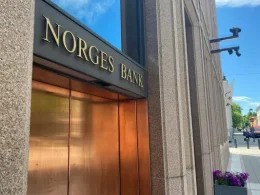The once-promising ESG bonds, designed to fund companies’ environmental, social, and governance initiatives, are losing traction among US companies and banks. Sales of these bonds have dropped sharply, with US companies issuing only $18.2 billion by 16 August, the lowest since 2019’s $12.5 billion, according to Bloomberg data. This decline contrasts with the surge in other types of investment-grade corporate debt.
Several factors contribute to this slowdown. Political pushback in states like Texas and Kansas against considering ESG factors in investments, growing skepticism about the effectiveness of these bonds, and the underperformance of US ESG funds compared to the S&P 500 are key reasons. This marks a significant shift from a few years ago when demand for sustainable debt surged, driven by a post-pandemic focus on social and environmental issues. Companies issued a record $94.5 billion in ESG bonds in 2021 on the back of that demand.
The politicisation of ESG debt has also diminished the price advantage issuers once enjoyed, making it less appealing for US companies to issue these bonds. Debut issuers, who were instrumental in the ESG bond market’s growth during the pandemic, are now pulling back due to the costs and complexities of issuing these bonds.
Economic uncertainty and rising interest rates have also led companies to prioritize simpler, more traditional debt offerings.
Even major US banks, once regular issuers of ESG bonds, have scaled back. Last year, the six biggest banks in the US collectively raised $3.2 billion of ESG debt, the lowest volume since 2018, Bloomberg-compiled data shows.
Citigroup Inc. remains the only big Wall Street bank that has issued a benchmark-sized ESG bond this year, while Bank of America Corp. — the biggest corporate issuer of US ESG bonds — last came to the market in June 2023. Both offerings were in the European high-grade market.
“Our sustainable bond offerings generally track with our overall debt issuance, which has steadily declined over time,” a BofA representative said in a statement to Bloomberg.
Despite these challenges, some experts remain optimistic about the long-term future of the US ESG debt market. While the market may evolve and diverge from its global counterparts, especially in sectors linked to transition innovation, the overall demand for sustainable financing is expected to persist.
“While the market may not see the issuance of labeled securities as frequently in the US, US companies aren’t necessarily operating differently,” said Emily Kreps, Deutsche Bank AG’s global head of ESG and sustainable finance, and head of ESG Americas. She points out that corporate strategies are set five to 10 years in the future, which means leaders may continue executing them in the long-run.
“I don’t think the green bond market in the U.S. will disappear, rather it will continue to evolve and become increasingly differentiated from its global peers,” she said.
Globally, ESG bond sales have accelerated. Global sales were at $660 billion as of 16 August, which was 6.9% more as compared to the same period last year, as per Bloomberg data.
Europe dominates the sustainable debt market, and the green corporate bonds there have gained 2.5% this year, roughly in line with the 2.4% gain for plain vanilla debt.





















